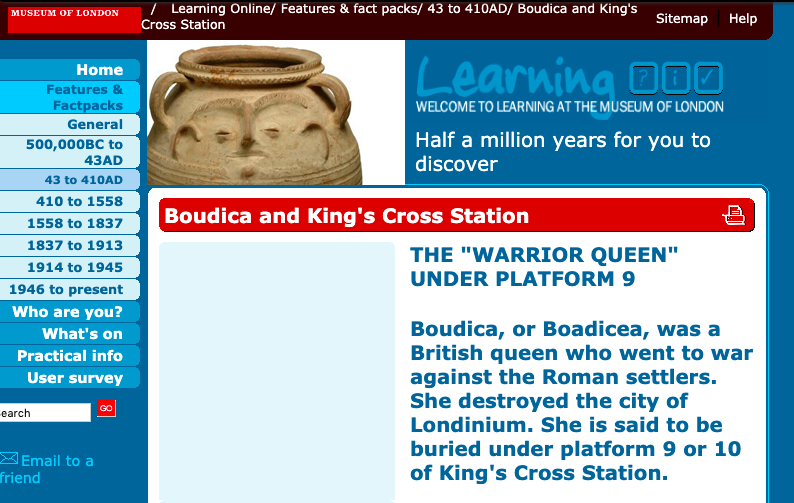Boudicca’s Last Stand
Today we left the rural idylls of the Ashby Canal and returned to the Coventry Canal, taking a big loop through the outskirts of Nuneaton. The canal side back yards were variously besplattered with roses…

… resplendent with fake geese…

… or littered with skeletons.
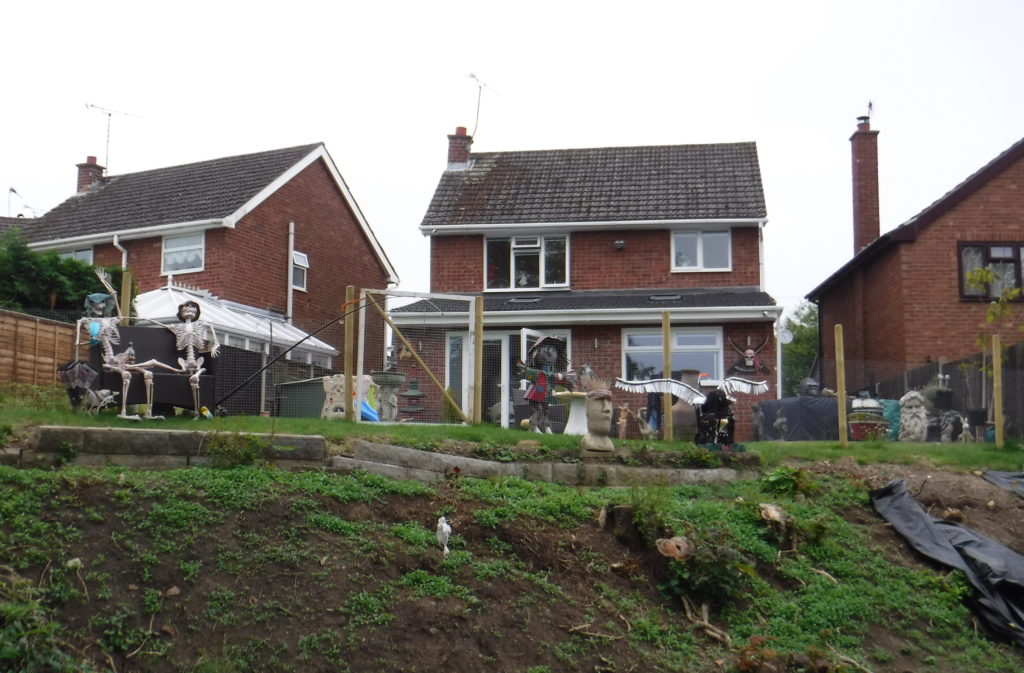
The towpath graffiti gets a B-minus at best.
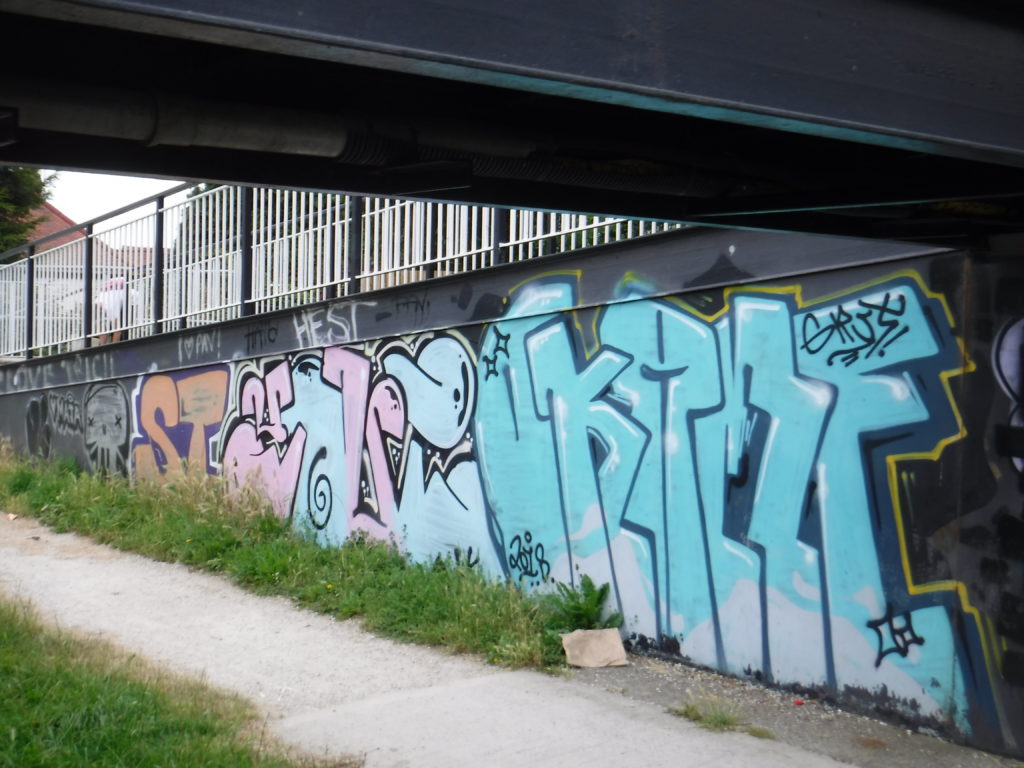
We passed a narrowboat decorated with battle swans made out of old tires.
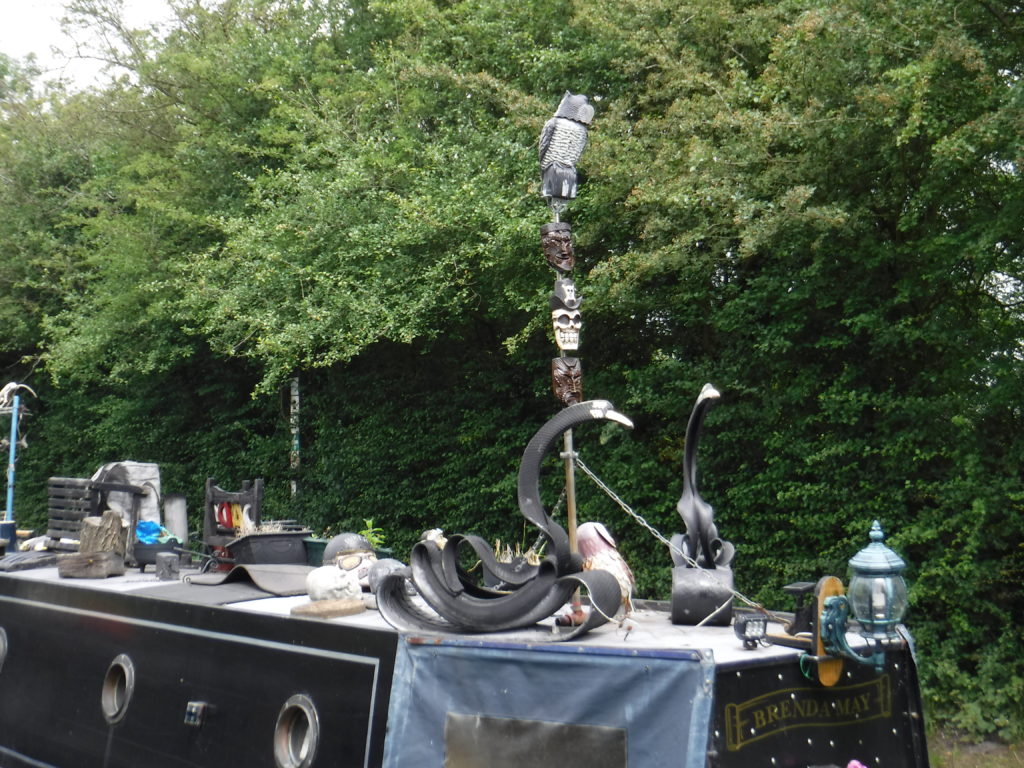
Past Nuneaton, the agriculture is pretty varied. There are designer cows…
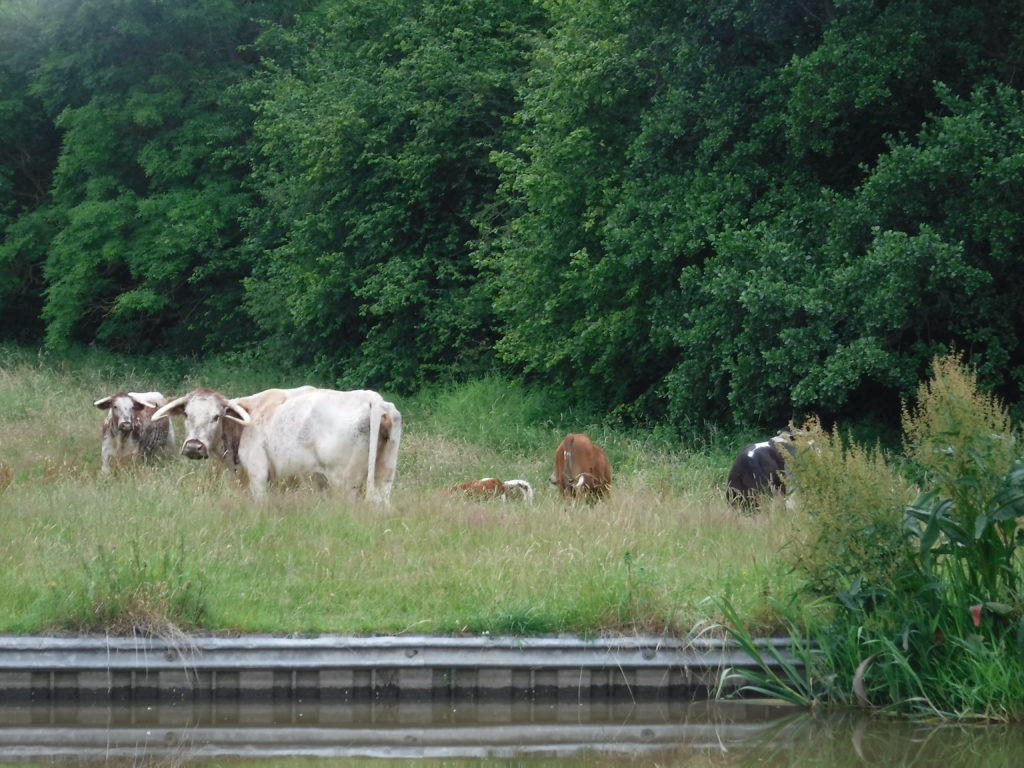
… horses, sheep, friendly goats…

… and even alpacas.

We are moored up near the village of Mancetter, which claims to be the site of Boudicca’s last battle.
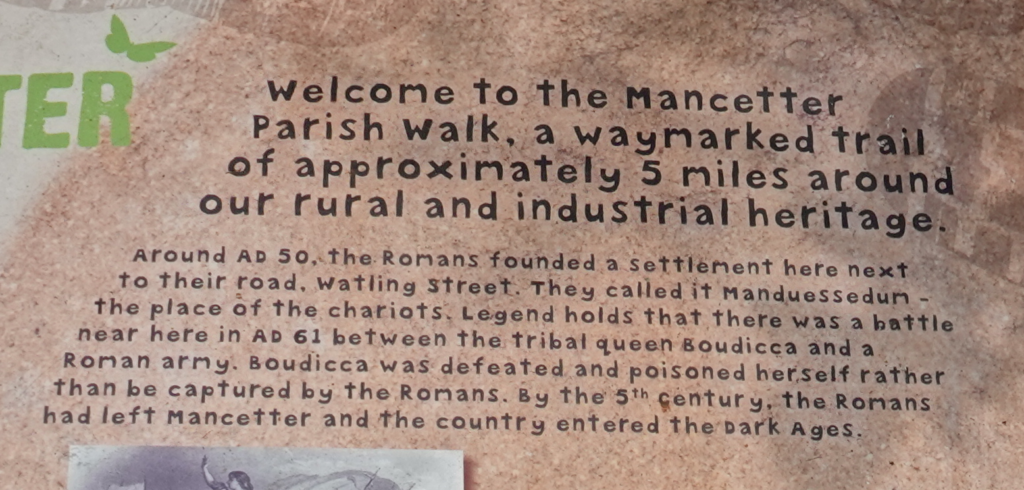
Boudicca (also known as Boudica, Boadicea, Boudicea, and Buddug) was queen of a native British tribe called the Iceni during the Roman era in Britain. On the death of her husband the Romans annexed her kingdom, and when she complained about this they beat her and raped her daughters. She led a massive rebellion against Roman rule, torturing and killing tens of thousands of Romans (and Britains who were doing just fine under the Romans thank you very much). She destroyed the recently founded Roman trading post of Londonium. Finally the Romans were able to gather a large enough force to defeat her, here at Mancetter. Except that according to other historians it might have been at High Cross in Leicestershire or Messing in Essex, or Kings Norton in Birmingham, or Cuttle Mill in Northamptonshire, or King’s Cross Station.
The King’s Cross theory was propounded by journalist Lewis Spence in his 1937 book Boadicea, Warrior Queen of the Britons. Other historians have described this book as “poorly sourced”, “lacking in academic rigor”, and “stark staring bonkers”. Spence’s other achievements include writing a history of Atlantis and founding the Scottish Nationalist movement. Followers of the King’s Cross theory have decided that Boudicca was buried somewhere between platform 9 and platform 10.
